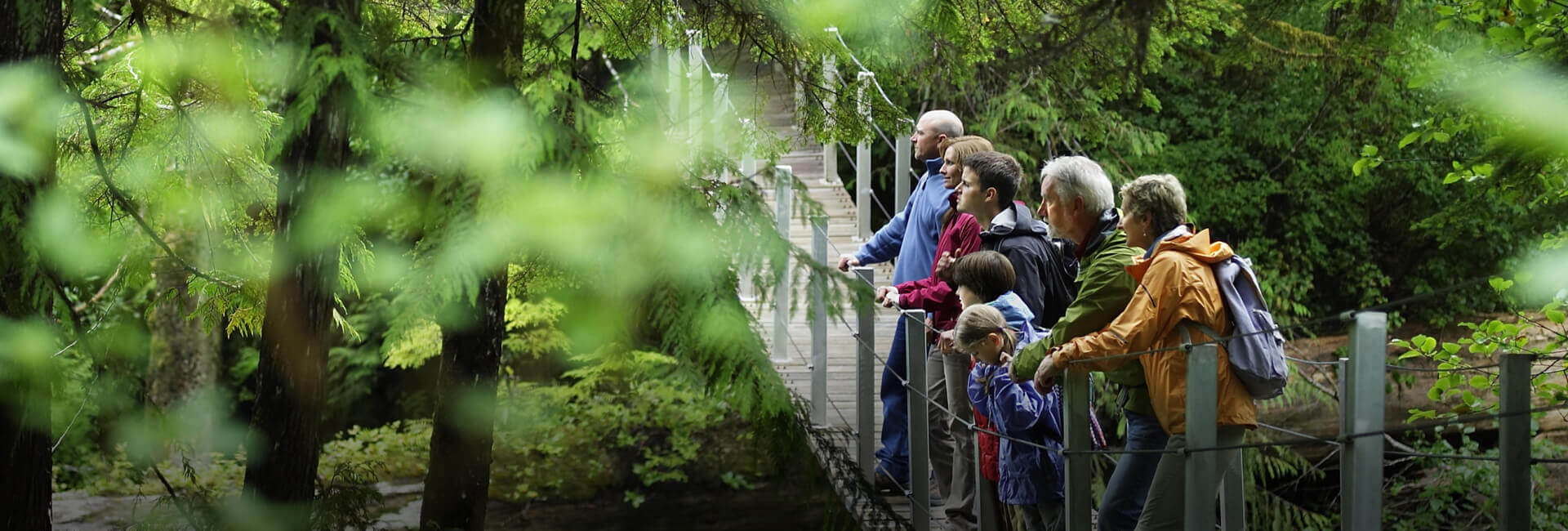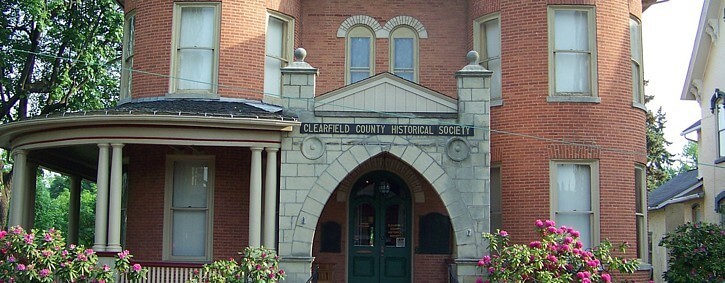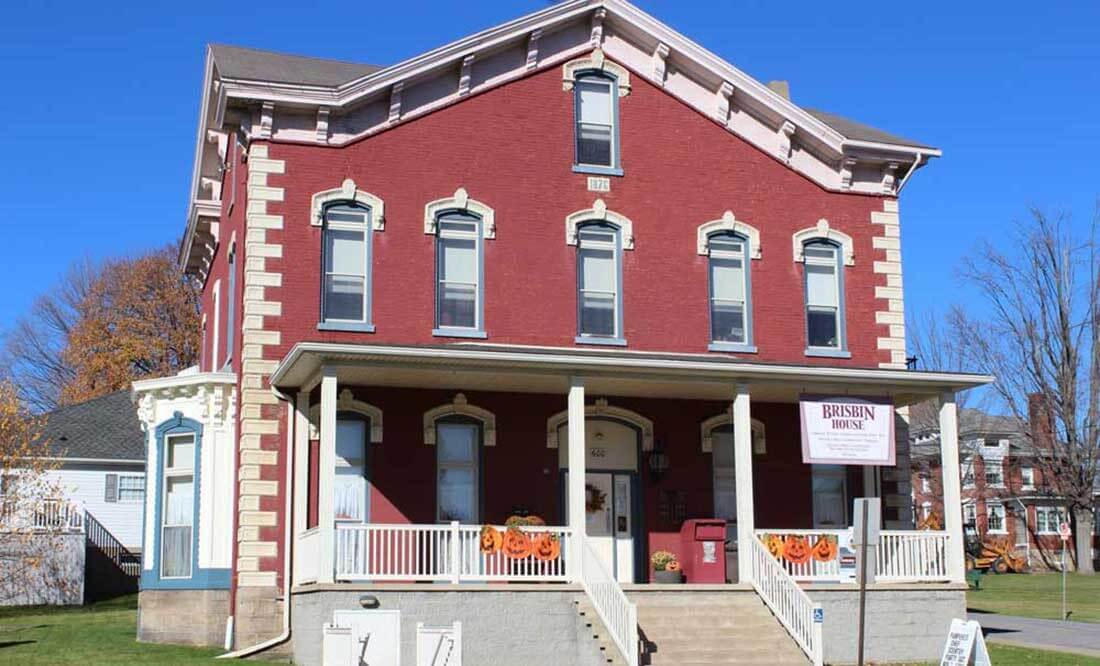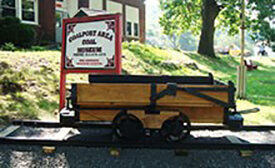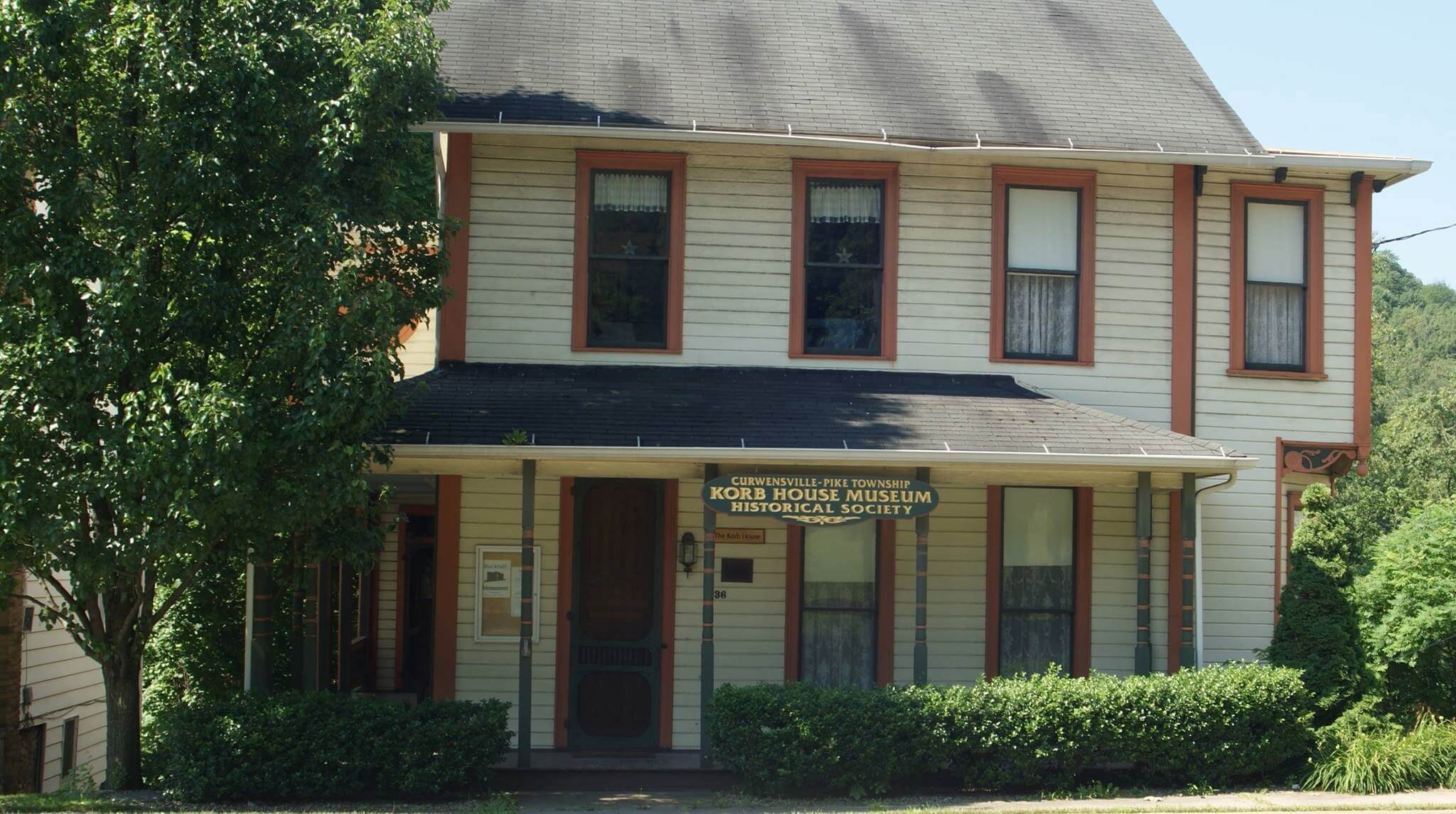Clearfield County Historical Markers
Clearfield and Surrounding Areas
Clearfield County
“Clearfield County, formed March 26, 1804, was named for clear fields found by early travelers. The first courthouse, in use for 46 years was build circa 1814. The cornerstone for the present courthouse was laid June 4, 1860, and finished in 1862 during the Civil War. It was constructed on the same site using materials from the first courthouse. As the oldest public building in Clearfield and the center of all county government business, it is an important historic structure. Listed April 1979 on the National Registry of Historic Places.”
*Erected in 2001 by the Downtown Business District Authority and the Clearfield County Commissioners
Old Town Historic District
“Entering Old Town Historic District, 4 Blocks of Victorian Homes 1860-1890. National Register of Historic Places. Clearfield Heritage Foundation.”
*Erected by the Clearfield Heritage Foundation.
Senator William I. Betts
“Former site of the home of Senator Betts (1870-1946) and his wife, Isabella Holt Murray, (1875-1939). Senator Betts served in the State Senate from 1923-1926. He and his father, William W. Betts, were one of the first fathers and sons from the same town to serve in the Pennsylvania State Senate.”
*Erected in 2004 by the Clearfield Heritage Foundation
Daniel Ogden (1734-1819)
“A Revolutionary War Lieutenant from New York State, Daniel Ogden came to the Indian village of Chinklacamoose and its clear fields in 1797. He made friends with the Indians who helped him build a house near where Ogden Avenue now intersects Second Street. Daniel and his wife H. Eleanor Schoutien were the parents of nine children. Their descendants live in Clearfield and throughout the United States. Historian Thomas Lincoln Wall wrote: “Daniel Ogden was far and away the most valuable one to come to the county prior to 1800.” Daniel Ogden is recognized as the first white settler in Clearfield.”
*Erected in 2002 by descendants of Daniel Ogden
The Murray House
“The adjacent house, built in 1880, was the home of Thomas H. Murray (1845-1916) and his wife Jennie Reighard (1847-1907). Mr. Murray was a well known lawyer, public speaker and churchman who did much to establish land and title work throughout Pennsylvania and the nation. Listed on the National Registry of Historic Places”
*Erected in 2002 by the Clearfield Heritage Foundation
First Clearfield County Jail
“The first county jail, c1820-1841 was a log structure, one of the oldest buildings in town. The jail is contained in the dwelling at 105 S. Second St. The second jail, 1841-1872, was a stone structure built on Market St., directly behind the courthouse. The county’s first hanging occurred there. The third jail, a large, walled, stone prison, was built at the north end of Second St., 1872-1983.”
* Erected in 2004 for the Clearfield County Bicentennial.
Kurtz Field
“Clearfield Little League Baseball was chartered and first played on this field in 1949. On December 3, 1952, Chas. T. Kurtz, Kurtz Bros. and the Kurtz Family gave this field to the Clearfield Little League Baseball Association for a permanent home for Clearfield Little League Baseball.”
*Erected in 2004 by the Clearfield Heritage Foundation
Hillcrest Cemetery
“Founded in 1881 it is the burial place of Gov. William Bigler, banker Ai F. Boynton, Dr. Dorothea McClure Gilmore, State Treasurer F.G. Harris, Hon. James Kerr, first county resident elected judge David Krebs, last WWI vet Alfred Livergood, Alfred M. Liveright, Esq., Thomas Holt Murray, Esq., Senator William Wallace and businessmen Porter Zentmyer and A.W. Lee. First burial, Dr. Henry Shope.”
*Erected in 2004 for Clearfield County Bicentennial.
Clearfield County Courthouse
“Clearfield County, formed March 26, 1804, was named for clear fields found by early travelers. The first courthouse, in use for 46 years was build circa 1814. The cornerstone for the present courthouse was laid June 4, 1860, and finished in 1862 during the Civil War. It was constructed on the same site using materials from the first courthouse. As the oldest public building in Clearfield and the center of all county government business, it is an important historic structure.Listed April 1979 on the National Registry of Historic Places”
*Erected in 2001 by the Downtown Business District Authority and the Clearfield County Commissioners
William Bigler (1814-1880)
“State Senator, 1841-1847; Governor of Pennsylvania, 1852-1855; and U.S. Senator, 1856-1861. Opposed slavery; favored a Southern compromise to avoid the Civil War. His brother, John, was elected Governor of California, 1852. Resided here.”
*Erected in 2004 for the Clearfield County Bicentennial.
Kurtz Bros. Building
“This site and the adjacent building was the first permanent location of Kurtz Bros. and Kurtz Stationery Store, founded in 1894 by Chas. T. Kurtz. The building was designed in 1901 by Washington, D.C., Architect Louis Frederick Stutz.”
*Erected in 2004 by the Clearfield Heritage Foundation
Senator William W. Betts
This site was the home of Senator Betts (1838-1896) and his wife, Margaret Irvin, (1839-1910) of Curwensville. Senator Betts was the son of Rev. Frederick Gregory Betts. He and his son, William Irvin Betts, were one of the first fathers and sons from the same town to serve in the Pennsylvania State Senate. Senator Betts served from 1887-1890.
*Erected in 2004 by the Clearfield Heritage Foundation
Presbyterian Church
“This is the site of the first wooden Presbyterian Church in Clearfield, built in 1841 during the pastorate of Rev. Frederick Gregory Betts. Rev. Betts was a noted “circuit riding” preacher who traveled the county and was well known in central Pennsylvania for his sermons on temperance. The present church was completed in 1869.”
*Erected in 2002 by the Clearfield Heritage Foundation
The Bigler House
“This property was deeded in 1825 by Abraham Witmer to A.B. Reed, a descendant of an early Clearfield settler, making it one of the county’s earliest recorded property transactions. According to an early map of the borough, the lot was owned by William Bigler who served as governor of Pennsylvania 1852-1855, and US senator 1856-1861, to date, the only Clearfield County resident to serve as governor of Pennsylvania. The present building was constructed in the 1880s by Governor Bigler’s son William Dock Bigler.”
*Erected in 2002 by Johnston Nelson & Shimmel LLP
Kurtz Bros.
“In 1894, Chas. T. Kurtz (1874-1956) started Kurtz Bros. He bought this site, the former Clearfield Fire Brick Co., in 1910 for his school supply and printing business. Headquartered in Clearfield, the company greatly expanded and has operated more than 100 years under the Kurtz family. It is known across the U.S. The Kurtz family philanthropy in the community has continued through the years.”
*Erected in 2004 by the Clearfield Heritage Foundation
Zenas Leonard (1809-1857)
“Clearfield native and fur trader, Leonard was second in command of the Joseph Reddeford Walker Expedition from 1831-1834 to find a route to the Pacific Ocean through the Sierra Nevada Mountains. Leonard served as the expedition's clerk and chronicler, recording the first non-native American encounter of giant sequoia trees. In 1839 Leonard published his account of the expedition, recognized for its detailed descriptions.”
*Erected in 2004 for the Clearfield County Bicentennial.
French and Indian War Expedition
“In 1756 a British exploratory force led by Captain John Hambright ventured up the West Branch of the Susquehanna River to Cinklacamoose near this site. They were on a mission to search for French forces and their Indian allies who were raiding British settlements to the East. This British force found only the abandoned burned village whereupon they returned east to Fort Augusta.”
*Erected by Clearfield County Historical Society.
Chinklacamoose
“Name of the Indian village located here, and visited by C.F. Post while traveling to an Indian council at Kuskuski in 1758. The later Clearfield is said to get its name from clearings made by grazing bison along nearby creeks.”
*Erected by Pennsylvania Historical and Museum Commission.
Trout Stocking
“1968 - the Old Town Sportsman Association started trout stocking
1975 - the Old Town Sportsman Association started its annual fishing derby
1999 - the PA Fish and Boat Commission started stocking trout as part of its annual stocking program
2005 - the PA Fish and Boat Commission classified this point at the Hyde Bridge downriver through downtown Clearfield as the only approved trout water on the West Branch of the Susquehanna River”
*Erected in 2005 by: Bob’s Army & Navy Store, Grice Gun Shop, & Jim’s Sports Center
Coordinated by Pat Domico.
Civil War Resistance
“Recruitment officer Col. Cyrus Butler was shot and killed by local draft resister Joseph Lounsberry in October 1864 just west of this location. Afterwards, the government sent troops to the county and arrested over 150 men. This included the Bloody Knox incident when another soldier and deserter were killed.”
*Erected in 2004 for Clearfield County Bicentennial
Curwensville and the Surrounding Areas
Hogback Bridge
“A single-span Pennsylvania (Petit) through-truss bridge crossed the west branch of the Susquehanna River here from 1893 to 1989. Replacing a wooden structure destroyed by fire, it took its name from nearby geographic features. This 215 foot pin-connected steel bridge was built by the King Bridge Company with stone abutments by J.A. Dunkle.”
*Erected by Department of Transportation.
Dimeling Bridge
“An Indian path, the 1796 State Road and the Erie Pike crossed Clearfield Creek here. Nearby, Ardery’s Sawmill and Elder’s Woolen Mill were among the first in the county. In 1857, armed rafters drove floaters of logs from the creek. Rafting continued until 1895. The Clearfield Bridge Post Office (est. 1824) served the area. C.1903 the Clearfield Southern RR established Dimeling Station, named for an area lumbering family.”
*Erected in 2004 for the Clearfield County Bicentennial.
Bicentennial Raft
“On March 13, 2004 an authentic timber raft 28 ft. X 110 ft. launched from this point for a 26-mile journey through the county to below Shawville. The raft, including a cabin, was built by over 100 volunteers using logs supplied by Robbins Lumber, Olanta. Richard Hughes and Gary Gilmore piloted raft.”
*Erected in 2004 for Clearfield County Bicentennial.
Arnold Nawrocki
“While working for the Clearfield Cheese Co. on nearby Meadow St., he invented the first commercially successful process for individually wrapped cheese slices. A patent was issued in 1956. An engineer, Nawrocki secured eleven food processing patents over his career.”
*Erected in 2007 by the Pennsylvania Historical and Museum Commission.
McClure Cemetery
“Revolutionary Soldiers: Arthur Bell, John Bell, William Bloom Sr., James McCracken, Thomas McClure, Mark Jordan, Nicholas Straw”
*Erected in 2004 for Clearfield County Bicentennial.
Curwensville Dam
“Begun in 1962 as one of four dams built to protect the West Branch Basin from flooding, it was completed November 1965. Unlike the devastating floods in 1889 &1936, Pennsylvania’s worst flood in 1972 was less severe in Clearfield County. The unprotected North Branch saw 40-foot flooding.”
*Erected in 2004 for the Clearfield County Bicentennial.
Bloody Knox
“On December 13, 1864, Co. C 16th VRC of the Union Army surrounded the Barnett log house at this site and requested the surrender of deserters and draft dodgers. Deserter Tom Adams fired and killed Union Soldier Edgar Reed of New Hampshire. Adams was killed by soldiers and is buried at St. Aloysius. Reed is buried in Philipsburg.”
*Erected in 2004 for the Clearfield County Bicentennial.
The Bell Site Dig
“From 1979-1985, Harry Matlack discovered 126 Late Woodland Indian graves with encampments dating from 1500 to 1650 at the old Grier Bell Farm near here. This site was a three-component village, home for at least three different groups, each building on the ruins of the preceding one. The first white child born in the county, Grier Bell (1799-1882) is buried on the family farm at the dig site.”
*Erected in 2004 for the Clearfield County Bicentennial.
Mahaffey and the Surrounding Areas
Grampian
“Originally called Pennville, the Grampian Hills P.O. served the area (1833-1892) when it became Grampian. The first county rural mail delivery started here in 1900, carrier E.A. Spencer. In the 1820s Quaker pioneers built a log meeting house at the Friends Cemetery site. Grampian native Nora Waln (1895-1964), famous novelist and WWII correspondent, was named Distinguished Daughter of PA.”
*Erected in 2004 for the Clearfield County Bicentennial.
A.W. Tozer
“One of the most significant evangelical Christian authors of the 20th century, Tozer was born a few miles south of here in LaJose (Newburg). A pastor with The Christian and Missionary Alliance and a nationally recognized theologian, lecturer and writer, he was the featured speaker here at the Mahaffey Camp SummerBible Conference in the 1940s and 1950s. Over 3 million copies of his more than 40 books are in print throughout the world.”
*Erected in 2007 by the Pennsylvania Historical and Museum Commission.
McGee’s Mills Covered Bridge
“Only remaining covered bridge over any branch of the Susquehanna River. Thomas McGee built this single-span Burr arch truss bridge in 1873 for $175 using hand hewed white pine timbers from the area. It was the last covered Bridge built in Clearfield County. Thousands of rafts floated under the bridge including the last raft in 1938. Listed on the National Register of Historic Places in 1980. Renovated in 1994 after collapse from snow damage.”
*Erected by the Mahaffey Area Heritage Society.
Last Raft
“From the 1840’s until c1912, thousands of county rafts floated billions of board feet of timber to sawmills in Lock Haven, Williamsport and Marietta. On March 14, 1938, a reenactment “Last Raft” left a traditional assembly point at Charlie McGee’s Landing near here, bound for Harrisburg. On March 20 the raft struck a Muncy bridge pier and 7 lives were lost including Raftsman Harry Conner.”
*Erected in 2004 for the Clearfield County Bicentennial.
George Atcheson (1787-1877)
“Abolitionist and Underground Railway Operator. In 1820 Atcheson settled on Susquehanna’s West Branch, upstream from this point. 1845 he built 2 large houses connected at different levels, secreting an area to hide slaves. Spiriting slaves from the Mason Dixon Line to Canada became a dangerous endeavor after the 1850 Fugitive Slave Law. c1856 he aided the Free Soilers to make Kansas a Free State.”
*Erected in 2004 for the Clearfield County Bicentennial.
John Ludwig Snyder
“A German native, Snyder came to PA in 1758, to this county c1820. Serving 6 years, he fought under George Washington and Gen. Wayne at Trenton, Brandywine, Germantown, Paoli and wintered at Valley Forge. He was a friend of Marquis de Lafayette and was with him at the Yorktown surrender. In 1832 he traveled to France for Gen. Lamarque’s funeral. Lafayette gave the eulogy. (“Les Miserables”)”
*Erected in 2004 for the Clearfield County Bicentennial.
Madera and the Surrounding Areas
Alexander’s Cemetery
“On July 1, 1784 Revolutionary War Soldier James Alexander (1726-1791) received a warrant for this ground. In 1809 his son William Brown Alexander (1782-1862) settled here, and the area became known as Alexander’s Fording. His will, dated April 25, 1851, bequeathed section 8 as a public burial ground.”
*Erected in 2004 for the Clearfield County Bicentennial.
Coalport
“The Reilly Post Office served the area until 1883 when the borough was incorporated and the name changed. Growth came with the arrival of the Bell’s Gap Railroad in 1883 which opened the area to coal mining. The once bustling town had theatres, sawmills, hotels, an opera house, a newspaper, company stores and a tipple downtown. On August 15, 1928 an explosion in Blain City killed 13 miners.”
* Erected in 2004 for the Clearfield County Bicentennial.
William A. Nevling Tavern
“Nevling’s Keystone Inn (c1849-1890s) is located on the old Wilderness Trail between Tyrone and Grampian. In May 1861 Col. Irvin passed by here with the Bucktails enroute to Tyrone during the Civil War. This was the last stage route in the county c1906. Nearby Janesville is named for Jane Nevling. Smith’s Mill P.O., est. 1826, was named for early settler and gristmill owner Amasa Smith.”
*Erected in 2004 for the Clearfield County Bicentennial.
Miner’s Strikes
“In 1869, 1872 and 1875 the first major coal strikes spread to this area. In 1872 four men were shot at the Sterling RR Station. This strike started unionism in the county. The 1875 strike resulted in over 50 arrests for riot and conspiracy at Goss Run, Woodward Twp. Union leaders Xingo Parks’ and John Siney’s famous trial in Clearfield drew national attention. Local miners joined the Knights of Labor then the United Mine Workers.”
*Erected in 2004 for the Clearfield County Bicentennial.
Osceola Mills
“The first town in the county to receive a railroad in 1862 and the telephone in 1878. In 1874 Berwind-White, the 4th largest coal company in the world, was founded here. The 1875 fire made homeless over 1200 of 1500 residents. Birthplace of Publisher Horace Liveright in 1886. On the route of the Lakes to Sea Highway in 1923. Revolutionary War Patriot Elizabeth Goss is buried at Stumptown.”
*Erected in 2004 for the Clearfield County Bicentennial.
Phillipsburg and the Surrounding Areas
Ames Field
“Named for airmail pilot Charles Ames who died flying in 1925, the county’s first airfield began as an emergency stop on the transcontinental airmail route from New York - San Francisco which started in 1918. In 1924 a navigational beacon was installed. United Air Lines began commercial service in 1934. A school and weather station were in operation. The field became obsolete by the 1940’s.”
*Erected in 2004 for the Clearfield County Bicentennial.
Kyler Homestead
“Located on the 1796 State Road that followed the Indian path; Conrad Kyler settled here in 1803. Abe Kyler occupied the log house c. 1820 until he sold to Ed Perks. The adjacent Kyler burial ground (Perks Cemetery) has the oldest marked graves in county, Catharine Pearce 1804 and her brother Conrad 1808.”
*Erected in 2004 for the Clearfield County Bicentennial.
Boggs Township
“Residents’ names when the township was formed in 1838 included: Adams, Beers, Benehoofs, Bushes, Gearharts, Gosses, Grays, Haneys, Hesses, Hummels, Kepharts, Litzes, Lumadues, Millers, Peters, Shaws, Shimmels, Smeals, Stones, Turners, Williams, Wilsons and Wisors. Built along the 1796 State Road that followed the Indian path, the Salem Church (1848) and the Waple log house are among the county’s oldest structures.”
*Erected in 2004 for the Clearfield County Bicentennial.
Woodland
“The first major commercial brickworks in the county (Woodland Fire Brick, 1870, and Hope Fire Brick, 1872) were located here and consolidated into Woodland Fire Brick Co. Ltd. in 1875. In 1884 it was sold to Harbison & Walker Co. of Pittsburgh, which eventually had seven brickyards in Clearfield County; the one in Clearfield (1899-1983) was at one time the largest in the world.”
*Erected in 2004 for the Clearfield County Bicentennial.
Karthaus and the Surrounding Areas
Frenchville
“French immigrants settled the area in 1832. A pure strain of the French language was spoken here until the 1960’s. Since St. Mary’s Catholic Church was built in 1870, it has been the site of the annual Frenchville Picnic. The first white burial in the county (1771) was French seaman Tohas Auxe, who died enroute from Canada to New Orleans. The stone was discovered on a local farm in 1896.”
*Erected in 2004 for the Clearfield County Bicentennial.
Karthaus Furnace
“Near here stood the iron furnace erected 1817 by Peter Karthaus. Rebuilt 1836 by Peter Ritner and John Say, it became in 1839 one of the earliest to use coke in place of charcoal. Abandoned at the end of the same year.”
*Erected by the Pennsylvania Historical and Museum Commission.
Miller’s Landing
“From the 1840’s until c1912, thousands of county rafts floated billions of board feet of timber to sawmills in Lock Haven, Williamsport and Marietta. A ring rock where rafts moored is still located along the river at the site of Lewis Miller’s Hotel (1869-1956). A ferry service ran here in the early 1900’s. Across the river the Great Shomokin Indian Path crossed the Moshannon Creek.”
*Erected in 2004 for the Clearfield County Bicentennial.
DuBois and the Surrounding Areas
Richard H. Burfoot
“A famous portrait and scenic artist, Burfoot came to the US in the 1880’s and Clearfield County in 1895. His home later in life was at this site with a studio in his yard. He also had studios in Pittsburgh, Washington and New York. His work is registered with the Smithsonian Institute. Burfoot did sitting portraits of county judges, senators, governors, cabinet officers and President McKinley.”
*Erected in 2004 for the Clearfield County Bicentennial
Big Spring
Former camping place at the junction of two Indian paths: the Great Shamokin, running from Sunbury to Kittanning; and the path to Venango, now Franklin. During War of 1812, Maj. McClelland's force camped here. Spring is 60 yards SW.
*Erected by the Pennsylvania Historical and Museum Commission
DuBois
In 1872 John DuBois came to the area and set up sawmills. They employed hundreds of men, sawed billions of board feet of lumber and operated until 1904. DuBois was incorporated in 1881; in 1916 it became the county’s only city. When the railroads came in 1874, coal mining began. Other major industries included ironworks, railroad car shops, tannery and brewery (1896-1972). In 1896 a mine explosion at this site killed 13 miners.
*Erected in 2004 for the Clearfield County Bicentennial.
George Rosenkrans
Noted band composer (1881-1955) lived most of his life in Penfield and was church organist here. Rosenkrans wrote piano and organ music and hymns, as well as over 200 band numbers. Among his marches are "Triumphant Battalions" and "Our Glorious Flag."
*Erected by the Pennsylvania Historical and Museum Commission
Phillip P. Bliss
The great singing evangelist and gospel song writer was born July 9, 1838, in a log house which stood a little distance from here. He lived and worked on the farm and in nearby lumber camps until the age of 16.
*Erected by the Pennsylvania Historical and Museum Commission
Historical Societies & Museums
Clearfield County Historical Society - http://www.clearfieldcountyhistoricalsociety.net
DuBois Historical Society - http://duboishs.com
Osceola Mills Community Historical Foundation - http://osceolamillshistorical.org
Coalport Museum - http://coalportmuseum.org
